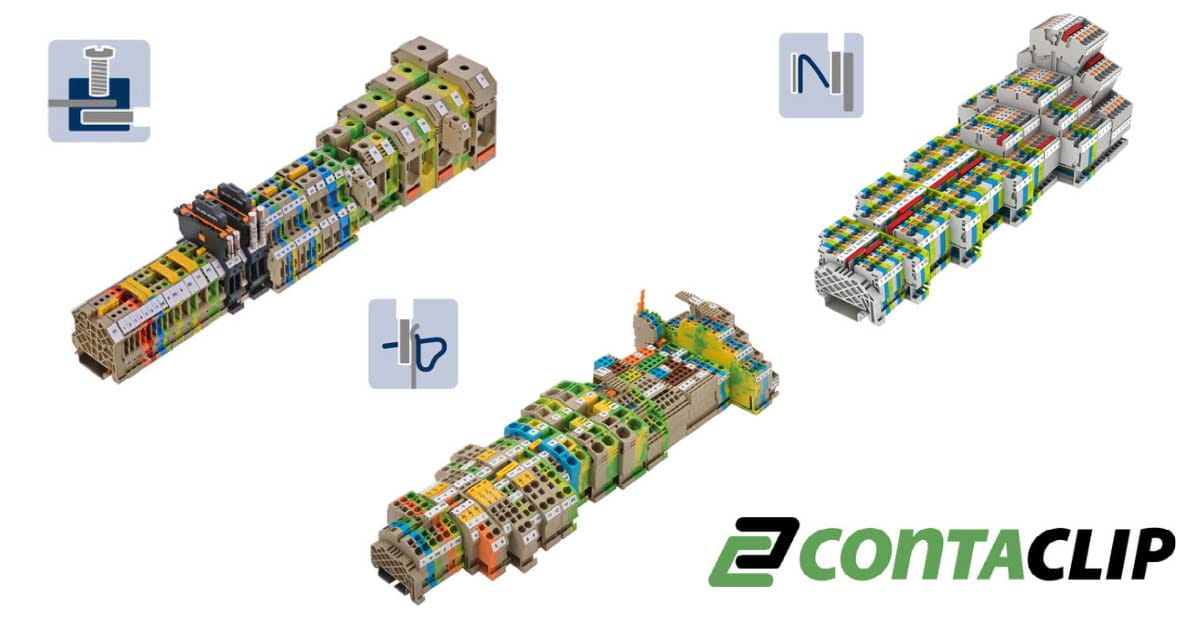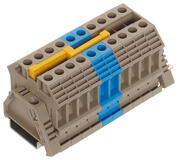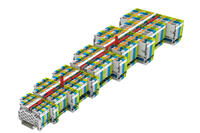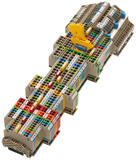
Choosing the correct terminal blocks for your requirements
Why are terminal blocks important?
Terminal blocks, also called din rail terminals, are the backbone of automation and electrical control systems. These devices secure two or more wires together and are enclosed in insulated housing. There is a clamping component and a conducting strip. Terminal blocks come in a variety of sizes, specifications, and colours.
Terminal blocks increase safety by grounding, isolating, and protecting the other components in the electrical cabinet. They provide test points, adding functionality and safety to the circuit. They are finger-safe connections that prevent electric shock.
Using the correct terminal blocks for your application from the start protects expensive electronics and measuring devices. It provides your business with essential insurance against dangerous electrical situations, shutting down of production lines, and losses in manufacturing, productivity, and customer confidence.
Common types of terminal blocks
There are generally three types of terminal blocks:
- single feed-through terminal blocks providing a wire-to-wire connection, connecting two wires together safely
- double level terminal blocks stacking another level of connection terminal on top of the first one
- triple level terminal blocks with three levels of contacts stacked on top of one another.
Multi-level blocks allow a number of connections to be made in the same block and can save space, simplify wiring and increase current capacity.
Colour coding of terminal blocks
This can remove the need for additional labelling. It can also indicate to the end user:
- high current or voltage
- AC or DC input and output
- signal distribution wires or power distribution wires
- grounding and earthing.
Considerations in choosing the right terminal blocks for your application
Key considerations are type of connection, specification requirements, compatible accessories and rail length.
Determine which type of connection suits your requirements
Different wire termination connections are used in different applications. They include push-in, screw-in, spring cage, insulation displacement and lugs.
Will there be vibration (such as in shipping) or long usage in the field? If you choose a screw connection, you may have to write a torque specification and re-check the connection regularly. Push-in and spring cage connections do not need this.
Will there be high currents? This could cause a spring cage connection to heat and cool regularly, weakening so that the wire is no longer safely anchored. In this case the spring should be steel reinforced.
Will the connection have repeated use? How many times will it be required to operate and still make a reliable connection? Insulation displacement connections cannot be continually disconnected and reconnected without cutting and shortening the wire, which wears out the blades. Push-in and spring cage connections have a limited actuation life as well.
Determine specification requirements - space
You should choose a terminal block and DIN rail that will fit well in the space you have, with enough clearance above and below for the terminals, accessories and the bend radius of the wires being connected.
Always make sure you have met the proper agency approvals for safety and end user location.
Determine specification requirements - electrically
Consider the maximum voltage, current rating and the wire sizes used in your system.
The wire size can be calculated through the current rating. Wire size (solid or stranded) also depends upon the type of conductor being used.
The contact material of your terminal block and wires of dissimilar metals can corrode, and aluminium on copper will loosen if not properly treated. For a signal reading like a thermocouple, the metal of the terminal block has to match the metal of the wire in order to ensure an accurate measurement.
Review the physical environment as well as temperature ratings.
Consider maintenance requirements after installation. The actuation points to remove and re-attach wires should be easy to see and easily accessible.
Choose compatible accessories
Choose suitable terminal block housing, cross connectors, end covers and end brackets to match your DIN rail requirements.
Make sure the cross connectors are rated for the full current your conductor needs to carry.
In some cases, terminal blocks can contain fuses or circuit breakers for circuit protection, indicator lights for easy monitoring, as well as diodes, resistors, capacitors or other electronics for enhanced safety.
Consider whether a pluggable terminal block would meet your requirements. They offer better control over a large group of terminals, save space and make for easy disconnection, testing and service. They are mounted and configured together on a DIN rail in the same way but the complete stack can be disconnected by removing just one plug.
Calculating DIN rail length
- Calculate the total density per foot of all types of blocks and their quantity.
- Add the width of end covers and end brackets.
- Add the width of partition plates, if there are any.
- Add 0.02mm per terminal to accommodate tolerance.
- Add at least 12mm to calculations for each rail to accommodate rail mounting screws if pre-assembling.
We're ready to help you
Invest some time in choosing the correct terminal blocks to ensure they are robust, efficient and perform well.
As always, the Panel team at OEM Automatic is available to assist with your requirements and specifications.
Contact our panel team for more information on choosing terminal blocks for your application: [email protected] or 0116 284 9900.
Blog







